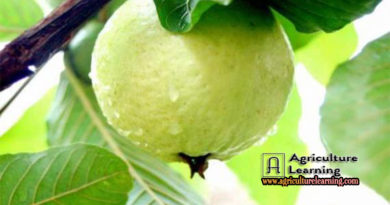Modern cabbage cultivation method Step-by-Step Guide
Cabbage Farming is popular for its adaptation to the soil varieties, climate conditions, and also storage productions. This is a complete step by step of the modern cultivation method of cabbage.
Here we describe the core things you will need to know before or after starting a cabbage farm. Check the whole post to find more information about growing cabbage.
Do you know that? Cabbage is a leafy & hardy vegetable and also known as a biennial plant. It is a great source of vitamin “C” and sulfur plus contains glutamine and amino-acid.
Cabbage was discovered in a wild of Europe but the production has settled in the countries like Poland, Indonesia, China, Russia, Korea, Ukraine, Romania, Egypt, and also the United States etc. Annually, 71.8 millions of cabbages are grown around the world.
Among this wide production system throughout the glove, 47% of them are produced by China. Cabbage works as an antibody in our body it is a cure for infections like constipation, gastric ulcer, cholesterol, and also repairing damaged skin cells. It also has some medicinal values as the antidote of deafness, headache, hangovers and stomach problems. It can also be grown in poly house, chlorophyll house, & containers too. Just because of its variety of advantages in human body cabbage farming becomes popular among farmers.
A cabbage can grow 0.5-4 kilograms. Before planting cabbage farming, Learn the basics regarding cabbage cultivation process step-by-step. The first step will be choosing the best varieties in your locality. Check the local vegetable market and query the demand. This will help you to determine which varieties to grow in your field.
Soil and the weather plays a huge role which directly dominates the outcome. Caring plants is always a hard work. But learning the tricks can save your time and hard labor. Also, this is a good practice to learn the latest technology regarding anything you do.
As like another farming method cabbage is also vulnerable to pests and diseases. Dig to pests and disease control to learn about them.
As a beginner, I found myself in a deep ocean when I let myself when choosing the species for my garden.
Varieties Of Cabbages:
There are surpassing types of cabbages like January king, Choy sum, Napa, Portugal, Pacifica, Lennox, Savoy ace, Huron & Earl Jersey Wakefield, Tropica Cross, Super Cross, Santa, Oxylus, Red Delight, Red Acre, Murdoch, Drum Head etc. Different cabbages have various qualities based on several conditions like:
- Red & Chinese Cabbage:Planted for fall harvest including “Ruby Perfection & Lei-Choy.
- Golden Acre:Used for quick harvest time. “Primo” and “Stone head” are also used the purpose.
- Early Jersey Wakefield:This continues splittings.
- Blue Vintage & Cheer:effective against any diseases.
- Murdoc:Delicate syrupy leaves.
- Red Delight & Acre:Early and easy to grow purple varieties.
Perfect Soil to grow cabbage:
We know that the cabbages are popular for the adaptability with climatic changes and also soils. So firstly the soil needs to be well drained. As they are greatly adaptive they can be plowed on sandy loam to clay.
- The ph level of the soil for cabbage farming is within 5.5-6.5.
- At least for good results, the ph shouldn’t fall below 4.5 and it shouldn’t span the range of 6.5 cause it provokes the death of the petal boundaries.
- It’s really crucial to keep this measure. But for better results, you can test your soil from near agricultural institutes.
Climatic conditions for plant cabbage seeds outdoors[incl. seasons]:
Let’s learn about the cabbage farming conditions, whether you want to grow it in a field or in our garden.
- Cool, moist, and humid atmosphere is really appropriate for growing organic cabbages outdoor.
- August-September is the best time for early mature seedlings and for late matures the time is September-October.
- For the temperature of the dry season, the transparency of the flavor gets spoiled. The proper temperature for the process is among 55-60 Fahrenheit.
- Along with the temperature, the humidity needs to be 90%-100%. Warmer environment makes bolt cabbages and later this they grow up with the tart flavor.
But it can also be planted in late winter and early spring at the temperature of 40-degree Fahrenheit. Because the germination procedure starts with this temperature. But some strong seedlings can undergo 20-25 degree Fahrenheit.
But in summer season they can be produced in coastal areas if the temperature is above 80-degree Fahrenheit. These seeds are anti-freeze survivors. Annually, in the horticulture field, every corps need at least 400mm-500mm 0f rainfall.
Correct Cabbage Planting Procedure:
The perfect cabbage planting procedure depends on your soil conditions. But the process described below is the best method to cultivate this vegetable commercially.
If you are willing to plant seeds, check the “Climatic conditions for plant cabbage seeds outdoors” topics to read about the sessions and temperature.
How to plant cabbage seeds outdoors:
Anyone can start cabbage farming but to be the success in cabbage farming you need to know the correct planting procedure. They are middlingly sensitive and soil salinity.
To nurture cabbages well 39-75 degree Fahrenheit is the best temperature. The seeds need to be kept inside before the last frost which is around 6-8 months.
The seeds will be grown in nearly 4 months after that they are planted outdoor before 2-3 months of the frost.
Like others plant, the spacing of plants plays an important role in cabbage farming. A proper spacing can bring you a greater profitability.
- The seedlings are planted in 4-5 levels. The planting depths has to be 1/4-1/2″ and 1-5′ is required for the depths of the roots. The measurement of the height & width has to be 12-15″ & 24-40″.
- The seed rate for the early variety is 500 grams/hectare and for late the proposition is 400 grams/hectare.
- The spacing for the early maturity is 45 cm for the row to row and 30 cm for the plant to plant. On the opposite, for the late bloomers, the row spacing is 60 cm and plant spacing is 45 cm. Growing Vegetables like Beans, Celery, Cucumber, Dill, Kale, Lettuce, Onions, Potatoes, Sage, & Spinach, Thyme, Artichoke, Beet, Bush along with cabbages makes your extra benefits.
- After 25 days of sowing seeds, every row needs to be spaced 18″ and in for beds the measure is 15″. The space between double rows has to be 24-30″. But for advance discreetness, you can depart your corps into a pair. One is the early variety and the other is a late variety crop i.e carrots, onions
- But some of the vegetables require the same value and nutrients as cabbages but they can’t be grown beside them. Due to having heavy feedings, frequent nutrients, and also the same fascination with the pests & diseases it can’t be nourished with the crop. These vegetables are as known as Strawberry, Cauliflower, Broccoli, and Tomatoes.
The appliances or utensils you’ll need for this farming are:-
- Sharp Knife.
- Fish Emulsion.
- Garden Hoe.
- Organic Mulch.
- Organic Soil Amendments.
- Water-Soluble Fertilizer.
Care for organic cabbage growing stages :
This is an important topic. When we starting to writing a guide for cabbage farming the first thing we completed is the caring process. There are several tips and tricks, that can save lots of your time. Because this is where farmers feel helpless. Feel free to ask any question in the comment box below.
Watering Tips:
The biggest preservation to look after the cabbages are watering. It is the hardcore ingredient to keep the plants combined.
- Special attention needs to be drawn to the land in autumn & winter.
- On the other hand, dry out causes plant bolting. It also keeps them from drying out and exterminates bitter flavors of the cabbages.
- It needs 11/2 inches of rain per week but if the climate condition of your region isn’t that rainy you’ve to keep it hydrated by watering yourself.
- Approximately, 10 liters of water is necessary for per meter square of the land. Soaker hose, jugs, the regular hose can be used for the purpose.
- The nurturing land has to be waterlogged weekly. The pressure shouldn’t be too strong so the soil gets decayed.
- You need to be sensible while watering the root & upper levels. Cause the roots to retain the moistures of the soil and the upper levels reassure the pests & diseases but balancing the measure it can be solved.
- Yellow leaves must be removed that are damaged by the pests & insects.
- Like any other vegetables, it doesn’t do well in the mushy soil for a long period. If for any reason the soil turns out very dry you’ll have to dig 3 inches down and water it if the soil shifts to moisture then you’re in a good shape.
As we know that the cabbages are the vast consumers of water and other factors they need to be side-dressed with composts, potassium, & nitrogen to keep the soil rich. After developing new leaves 20-20-20 can be scattered. It is prohibited to start the fertilization after 4-5 weeks later when the plants will be growing solidly and the germination procedure is over.
Mechanism Of Irrigation:
The cabbage is an adaptive vegetable but still, it can’t endure dehydration. In winter season the procedure is done by interim irrigation which requires 8-10 days. But in the dry season has to be persistent and constant. A limited amount of water should be kept on the furrows to re-hydrate the corps in the dry season. Exceptional drainage system needs to made for rainfall conditions. Drizzle irrigation needs to be made for continents with less rain.
Weed controlling:
Weeds make the land a useless junk. They mostly damage the roots of the cabbages. The first elimination time for the weeds is after 2-3 months when there half-grown. the process is done by dredging. The drilling method needs to be precise so the plants don’t get bruised. Along with this hoeing herbicides also helps to annihilate the weeds. And they are Alachlor & Metolachlor.
But I am afraid to say, Beginner farmers do not realize the weeding procedure completely. Hope! you do not make mistakes. Note this instead.
Control the weeds in time, You should keep the cabbage garden clean in those time.
- Contol weeds in growing stages.
- you need to perform weeding before and after fertilization is applied.
- Some time in very hot and shine day weeds help to preserve water, but I warn you to be careful.
- In circumstances like this only remove the unwanted plants near the roots. Although I will suggest you for using mulch or a shade. Mulch is beneficial not only help your cabbage with water but also protect them from the extreme sunlight on your garden.
Alachlor:
Alachlor is not as strong or, adequate as Metolachlor. But it helps to oversight the spectrum of the weeds. you’ve to memorize that this herbicide can’t slightly be overused.
Metolachlor:
It helps with the depressed conditions of the plants.
Fertilizer requirements for cabbage farming :
As they are heavy feeders they also prescribe highly effective fertilization like potassium, nitrogen, phosphorus, composts, urea instead of ammonium sulfate for acidic soils. Fertilization applying limit for cabbage farming is 11/2 pounds per 100 square feet. Organic farmers will apply Organic fertilizers after 20-30 days of planting if it requires. Try to avoid fertilizers produced with human excreta.
For only conventional farmers, this will apply. Though it is against organic farming and bad for health. We suggest testing the soil and provide the needed vitamins to the soil. For ensuring faster and bigger vegetables use nitrogen, potassium and phosphorous.
- 12-12-12 or, 10-10-10 is the fertilizer that obligates well with cabbages.
- These numbers, are sealed in the containing process of the fertilizer which represents how much organic ingredients the corps needs.
- For example, every cabbage land requires 200-250 kilogram of nitrogen per hectare.
- Utilization needs to be strengthened out with phosphorus and potassium. The leftovers can be side-dressed after a week or 3 after the transplanting. Boron & Molybdenum can be sprayed during this term.
Common Pests & Diseases:
While growing the cabbages the corps faces many kinds of diseases & pests. This diseases & pests reduces the color, essence, weight, quality and the advancement of them.
The pests that cause inflicts the to the corps are Cabbage worms, Cabbage loopers, Aphids, Cabbage root maggots, Flea beetles, Cutworms, Nematodes, Bagrada Bug, and American Bollworms.
The diseases that spoil the production are Blackleg, Club-root, Dumping Off, Downy Mildew, Leaf spot/Ring spot/Target spot, Powdery Mildew, White Blister, White Mould, White leaf spot, Wire Stem etc. But the primary diseases are caused by Sclerotinia & Botrytis.
These catastrophic components cause devastation to the stems, wilts, heads, seedlings, flower and even an entire plan. But uttermost of the diseases and pest causes damage to the leaf and root.
Control: Chemical components like Carbaryl, Spinosad, Neem oil extracts, Permethrin and insecticidal soaps. But some of the diseases and pests attacks may not have the cure. In this regard, you can take consultation with your near governmental agriculture institutes.
Harvesting Tips:
The cabbages should be harvested when the heads are substantial and ripened. It takes around 71-88 days. The best way of harvesting this crop is to compress it by your own hand if you feel the strong & firmness of the head then your cabbage is ready to harvest.
Sometimes some adult looks great, healthy, & ripened but inside it’s soft and unfit to be harvested. So don’t judge the visualization cause it can be tricky to examine every single plant by your own hand.
Early produced cabbages weight varies 1-3 pounds. Firstly you need to cut the stem underneath the head with a sharp knife and detach the head from the plant but leave the leaves and other parts on the ground. A week later those leaves and other parts will form as a little cabbage maybe it will be small but it has a great flavor.
Storage Techniques:
The storage system is one of the most important procedures in the field of cabbage farming. If the inhalation of they goes well the product loses its nature but proper storage system slows down the respiration. The temperature of the storage system needs to be 0 degrees or, 32 degrees Fahrenheit.
Moreover, the has to be at least 90% or, high cause if the humidity level is less than 80% them will lose its precipitation. Refrigeration is the best way to handle the humidity of the cabbage. It can be stored in the fridge for 2 weeks by only packaging it with plastic.
Furthermore, It needs to be dried out before the storage system. However, in the tuber cellar position, the cabbage can be refrigerated for nearly 3 months. They shouldn’t be stored with fruits particularly with Apple even if the proportion of temperature & the humidity level is the same cause they exhale ethylene which discolors the cabbage.
1,139 total views, 1 views today




